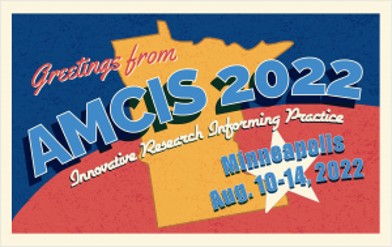SCUIDT- Strategic and Competitive Uses of Information and Digital Technologies
Loading...
Paper Type
ERF
Paper Number
1716
Description
A Digital Transformation fundamentally involves the implementation of one or more digital tools, which is a process often burdened with challenges. It is estimated that approximately 66 to 84 percent of the taken Digital Transformation initiatives are unsuccessful, which can be attributed to organizational shortcomings, more specifically structural ones. While public organizations regularly do not achieve the same success as those in the private sector, it was of interest to investigate the Swedish ones. Where 86 percent of residents use the internet to interact with public authorities. Previous research has singled out the IT organization to be the appointed leader of Digital Transformations, further research on that relationship is limited. Therefore, this study examines how the IT organization, in an agile environment, can align its structure for a successful Digital Transformation. To answer the discovered research problem, the following research question has been formulated: “How should an IT organization’s structure be aligned in an agile environment in order to achieve a successful Digital Transformation?”. This is research in progress and will be continued by conducting case studies in four public organizations. Data will be collected through semi0structured interviews and analyzed thematically. Finally, a presentation of different aspect of organizational structure alignment through digital transformation based on these cases will be provided.
Recommended Citation
Aasi, Parisa; Atug, Sebastian; Cermeno, Lorenzo; and Rusu, Lazar, "Digital Transformation Success Through Aligning the Organizational Structure: Case Study of Swedish Public Organizations" (2022). AMCIS 2022 Proceedings. 10.
https://aisel.aisnet.org/amcis2022/scudt/scuidt/10
Digital Transformation Success Through Aligning the Organizational Structure: Case Study of Swedish Public Organizations
A Digital Transformation fundamentally involves the implementation of one or more digital tools, which is a process often burdened with challenges. It is estimated that approximately 66 to 84 percent of the taken Digital Transformation initiatives are unsuccessful, which can be attributed to organizational shortcomings, more specifically structural ones. While public organizations regularly do not achieve the same success as those in the private sector, it was of interest to investigate the Swedish ones. Where 86 percent of residents use the internet to interact with public authorities. Previous research has singled out the IT organization to be the appointed leader of Digital Transformations, further research on that relationship is limited. Therefore, this study examines how the IT organization, in an agile environment, can align its structure for a successful Digital Transformation. To answer the discovered research problem, the following research question has been formulated: “How should an IT organization’s structure be aligned in an agile environment in order to achieve a successful Digital Transformation?”. This is research in progress and will be continued by conducting case studies in four public organizations. Data will be collected through semi0structured interviews and analyzed thematically. Finally, a presentation of different aspect of organizational structure alignment through digital transformation based on these cases will be provided.
When commenting on articles, please be friendly, welcoming, respectful and abide by the AIS eLibrary Discussion Thread Code of Conduct posted here.



Comments
SCUIDT